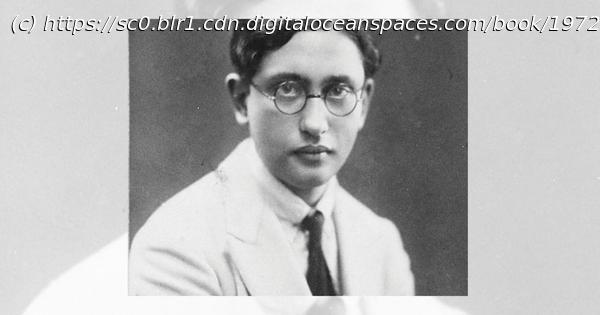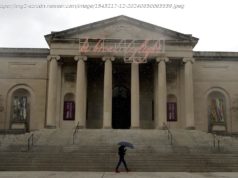The painter stood at the crossroads of the modern art movement of Sri Lanka and India.
George Keyt, Sri Lanka’s most celebrated painter, died 30 years ago in 1993. During his life and after his death, he became the subject of several studies by Sri Lankan and foreign scholars. Today, his paintings have found their way to some of the biggest art collections in his country, as well as to places like Christie’s and Sotheby’s.
Taken together, these paintings represent some of the finest examples of modern art in Sri Lanka, South Asia, and Asia. They have also become national symbols.
Keyt, who established himself as Sri Lanka’s leading national painter, followed a remarkable artistic trajectory. His travels in and his connections with India as well as their influence on him have been greatly studied – but a full portrait of the artist remains as elusive as ever. However, extensive new research has uncovered aspects of his early life, which shed light on his later career.
The research has uncovered little studied links between the modern art movements of Sri Lanka and India, and Sri Lanka’s contribution to cultural modernism in South Asia and Asia. As Keyt’s artistic journey illustrates, his early career, which was largely influenced by Buddhism, remains as distinctive as the years in which he was influenced by the larger artistic and cultural landscape of India.
Born in 1901 in the mountainous region of Kandy, around 120 km from the country’s capital, Colombo, Keyt hailed from a middle-class family that had become thoroughly Westernised and Anglicised. They belonged to the Burgher community, an ethnic group that traces its descent from the Portuguese and the Dutch.
By the 20th century, the Burghers had acquired a distinct identity and were dominating professions such as law and medicine. They occupied an intermediate social position: historian Michael Roberts describes them as “people in-between”.
Keyt chose to reject this inheritance. Turning away from his Christian and Westernised upbringing, he embraced Buddhism and learnt Sinhalese, the language of Sri Lanka’s ethnic majority, along with Pali and possibly Sanskrit, from Buddhist monks. Refusing to conform to the lifestyle of his peers, he immersed himself in the culture of his land.
Keyt attended Trinity College, the leading elite school in Kandy that had been founded by Anglican missionaries in the 19th century. At Trinity he acquired a somewhat notorious reputation. He found lessons boring and was constantly punished by his teachers for not paying attention.
Yet, he read widely and was encouraged by the principal of Trinity College, Alexander Garden Fraser. Fraser, an Anglican missionary, was something of a revolutionary, a nonconformist who had enacted several reforms at Trinity. He took a personal interest in Keyt and allowed him to visit the library. His interventions moulded Keyt.
In 1917, Keyt wrote an essay to the Trinity College Magazine, reviewing a painting by the 19th century artist Briton Rivière. The painting, Phoebus Apollo, shows the Greek god charioteering among a pack of lions. Keyt’s essay displays a clear grasp and love for the subject. He exhibits a love if not admiration for the divine, and hails Apollo as the God “of life… of beauty, strength, and all noble endeavours”. This love for the divine was to persist in his life and is also likely to have influenced his decision to convert to Buddhism and Hinduism.
In the 1920s and 1930s, he built up a reputation as a writer and a poet. He began to write to a number of journals and magazines. Crucially, this was a period of much cultural and religious revival in Ceylon, a revival that would have a profound influence on him.
In 1908, seven years after Keyt was born, the renowned Oriental scholar Ananda Kentish Coomaraswamy had published his work on Kandyan culture, Mediaeval Sinhalese Art. Keyt read Coomaraswamy’s book and was profoundly moved by his insights on Kandyan art and craft. He made it a point to visit the temples of Kandy and to observe their murals.
Dismissed as inferior until then, in Coomaraswamy’s view these murals exemplified the patterns and beliefs of a simple people. For Keyt, too, they acquired a living relevance. Not surprisingly, in his first few essays and drawings, he focused on Buddhist themes.
By the 1940s, Keyt had established himself as a leading national painter. He had moved away from the classicism of his early work and immersed himself in Modernism, the art of Pablo Picasso, Georges Braque and Fernand Leger. He was experimenting and defying the conventions of his day. By now had joined and become a leading light in the 43 Group, Sri Lanka’s and Asia’s first modern art movement, founded by his close friend the photographer Lionel Wendt.
More crucially, Keyt had discovered the art and culture of India. At the height of World War II, he travelled to India. He visited the shrines of Bhubaneswar and Konark, among other places, and forged connections with Indian artists, including the novelist Mulk Raj Anand and the painter MF Husain.
It is this latter phase of his career that has occupied scholars today. At first glance, their interest is understandable. Keyt was not just moulded by the ancient heritage of India, he figured in many contemporary cultural and intellectual circles there.
Moreover, in the 1930s, he developed and nurtured a love for Hindu mythology. In 1946 he illustrated an edition of Gita Govinda, the 12th century Hindu poem which dwells on the love between Radha, Krishna and gopis or female cowherds. The romance between Radha and Krishna would form a constant motif in Keyt’s later work.
In his country, Keyt remained renowned to his last. He lived to see three highly acclaimed studies on him. In 1950, his close friend Martin Russell wrote George Keyt. It was published by Marg, the art and architecture magazine founded by Mulk Raj Anand. In 1989, another close friend, Sri Lankan bibliographer and librarian HAI Goonetileke, published George Keyt: A Life In Art. Goonetileke’s book is concise, and it refers to Keyt’s earliest paintings, including a series of drawings on the life of the Buddha. Then, in 1991, two years before his death, anthropologist Sunil Goonesekera wrote a monograph on him, Interpretations, published by the Institute of Fundamental Studies in Kandy.






